Einleitung
This guide will help you replace the Volume/Power Button Cable. Warning: This guide requires soldering.
Werkzeuge
Ersatzteile
-
-
With the heat gun set on "low", begin heating the lower portion of the Touch near the home button.
-
-
-
Insert the edge of an iPod opening tool between the front glass panel and the plastic bezel near the home button.
-
Pry the bottom edge of the front panel upward, being careful not to bend the glass excessively.
-
-
-
When there is enough room to grab the bottom edge of the front panel, lift it away from the body of the Touch to peel up the adhesive along its left and right edges.
-
-
-
Carefully pull the top of the front panel assembly away from the adhesive holding it to the Touch, minding the short digitizer cable connecting the two components.
-
-
-
Remove the following eight Phillips #00 screws:
-
One 3.5 mm Phillips screw
-
Two 3.0 mm Phillips screws
-
One 2.3 mm Phillips screw
-
One 2.4 mm Phillips screw
-
Three 2.0 mm Phillips screws
-
-
-
Use the edge of an iPod opening tool to pry the thin steel cover up from the rear-facing camera.
-
Remove the steel cover from the iPod.
-
-
-
Insert the edge of an opening tool under the steel mid plate near the bottom left corner of the Touch.
-
Slowly pry upward to separate the plate from the adhesive securing it to the plastic inner case.
-
If the plate is still attached to the logic board, re-warm the area to loosen the adhesive, then slowly separate the plate from the logic board using the opening tool.
-
There is a thin, fragile ribbon cable underneath the plate. As you pry the plate up, be very careful not to rip the cable.
-
-
-
Slightly tilt the steel mid plane to dislodge it from the rear case.
-
Lift the steel mid plane up off the rear case and peel off the piece of copper tape stuck to the rear-facing camera.
-
-
-
Use an iPod opening tool to pry the headphone jack connector up and out of its socket on the logic board.
-
-
-
Remove the single 2.6 mm Phillips screw securing the headphone jack assembly to the rear case.
-
-
-
Use an iPod opening tool to gently lift the edge of the headphone jack nearest the battery out of its recess.
-
Remove the headphone jack from its housing within the rear case.
-
-
-
Remove the following three screws near the top edge of the logic board:
-
One 2.0 mm Phillips screw
-
Two 2.3 mm Phillips screws
-
-
-
Use the edge of an iPod opening tool to gently pry, but not remove, the rear-facing camera away from the rear case.
-
-
-
Use an iPod opening tool to slightly lift the edge of the logic board next to the battery enough to grab it with your other hand.
-
Be very careful not to lift too much as the volume control ribbon cable is still connected and will tear very easily.
-
While gently lifting the logic board with one hand, use an iPod opening tool to lift the logic board near the copper tape at the logic board's top edge.
-
The logic board will be lifted adequately when the last display assembly connector has cleared the top edge of the rear case.
-
-
-
With a plastic opening tool, gently pry the iPod's speaker out of its recess in the outer case.
-
Allow the speaker to rest above the battery so that you can proceed with battery installation.
-
-
-
Use a plastic opening tool to pry up the adhesive around the three exposed edges of the battery.
-
-
-
After the edges of the battery are loosened, begin prying up the edge of the logic board. Start at the top and work your way down the side of the board.
-
-
-
With a plastic opening tool, carefully push the dock connector out of its outer case recess. Work each corner evenly until the connector comes free.
-
-
-
Once all of the adhesive is freed from under the logic board/battery assembly, lift the assembly up from the side and carefully rotate it over to access the underside of the battery.
-
-
-
Remove the two 1.3 mm Phillips #00 screws securing the Volume/Power button cable metal cover.
-
Lift and remove the metal cover out from the rear panel assembly.
-
-
-
With the corner of a plastic opening tool, gently move the ribbon cable out of the way so you can get to the screw beneath it.
-
-
-
Remove the two 2.0 mm Phillips screws securing the power button assembly to the rear panel assembly.
-
-
-
Use the edge of a plastic opening tool to peel the piece of copper tape covering the volume/power button assembly.
-
LIft and remove the piece of copper tape out of the Touch.
-
-
-
Slide the plastic opening tool under the length of the ribbon cable to release it from the rear panel.
-
-
-
Wedge the plastic opening tool under each volume controller and pry the assembly loose from the case.
-
-
-
In the next few steps, you will desolder the four volume/power button ribbon cable solder joints on the logic board.
-
-
-
Start working from the outside of the ribbon cable. Heat the outermost solder pad while gently prying up from under the ribbon cable to free it from the board. Repeat this process for each of the three remaining pads, working from right to left.
-
-
-
Place the replacement cable in place and align the far right contact with the far right solder point. Use two small strips of electrical tape to hold the cable against the solder pads.
-
Place two strips of tape over the end of the ribbon cable to both cover the two left-most solder pads and hold the contacts down against the logic board.
-
Heat the right-most contact until the solder below melts, then apply a small amount of solder to the contact, allowing it to flow through the two holes in the cable and down to the logic board.
-
As soon as the solder has flowed into the joint, remove both the solder and the iron.
-
Repeat this process with the second solder pad.
-
-
-
Remove the old tape, and place a new piece of tape to hold the cable in place, but uncover the remaining two pads. If you are satisfied with the position of the cable relative to the pads on the board, proceed. If not, de-solder the first connection and try again.
-
Solder the two remaining pads to the logic board, being mindful of overheating the cable or board.
-
To reassemble your device, follow these instructions in reverse order.
3 Kommentare
Search at ebay
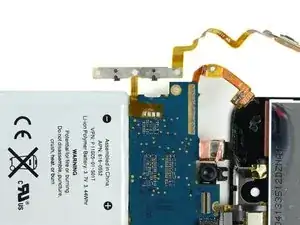
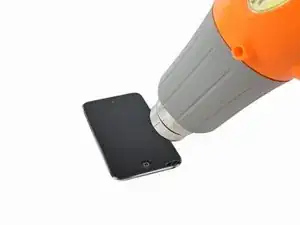
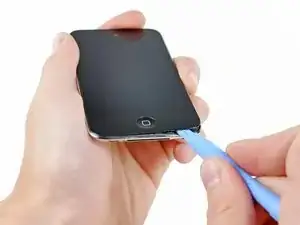
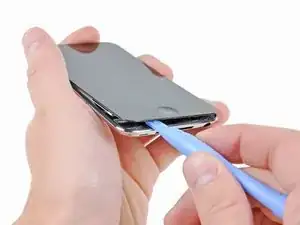
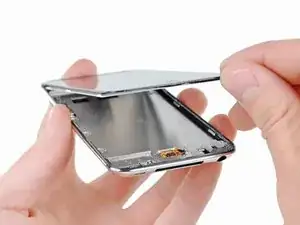
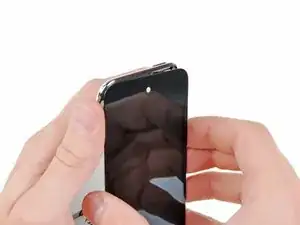
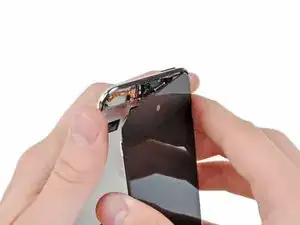
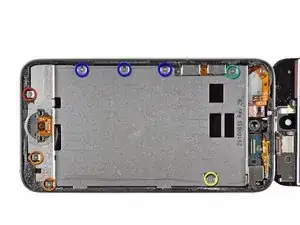
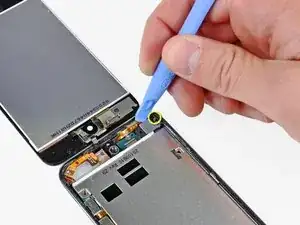
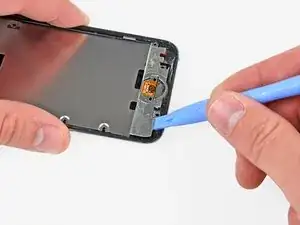
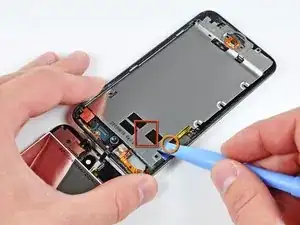
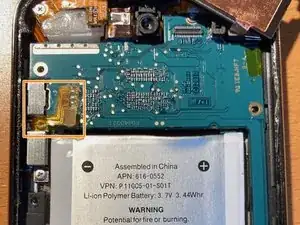
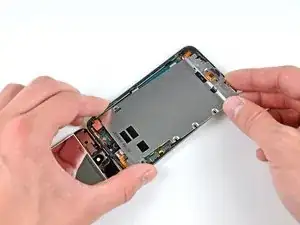
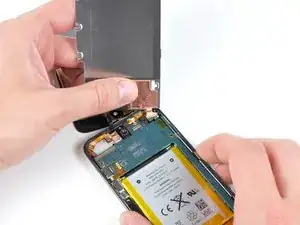
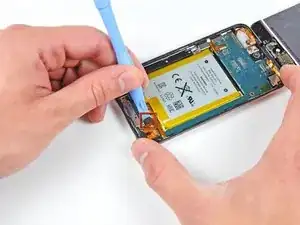
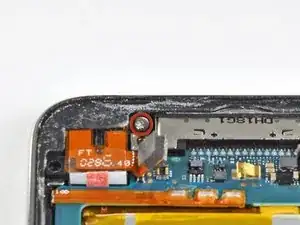

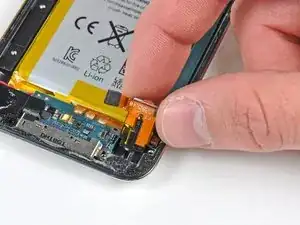
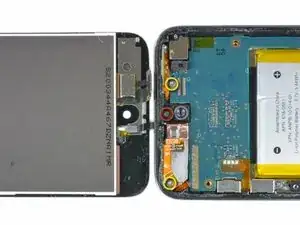
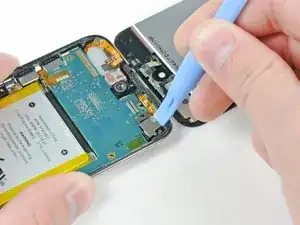
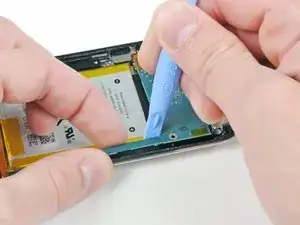
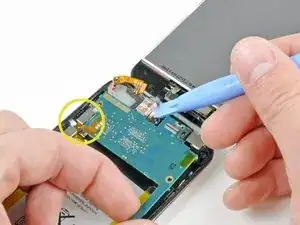
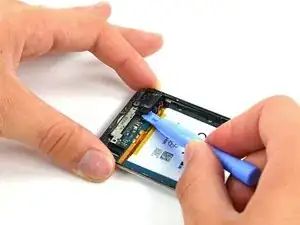
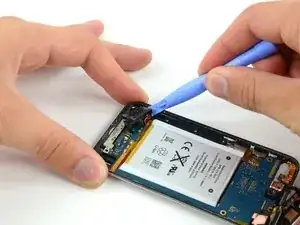
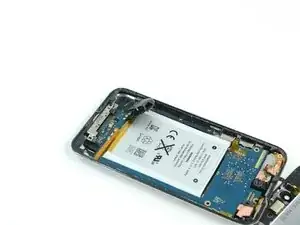
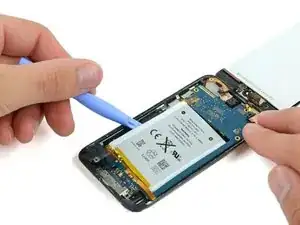
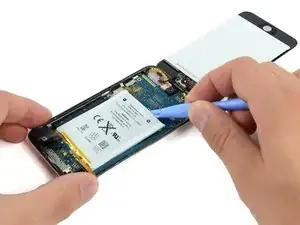
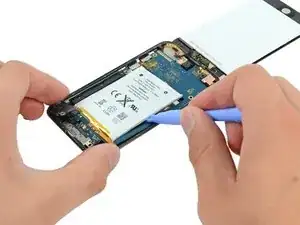
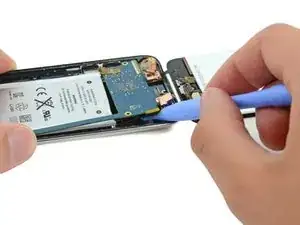
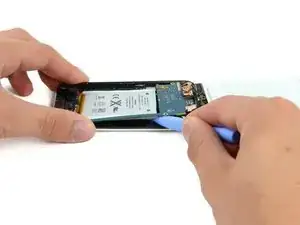
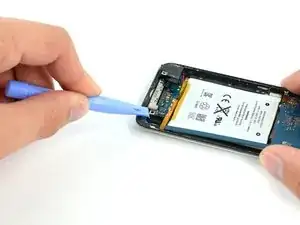
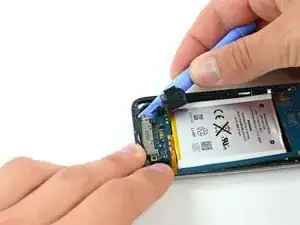
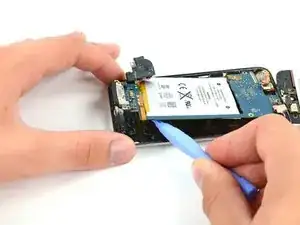
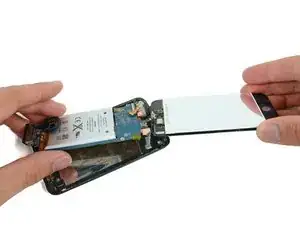
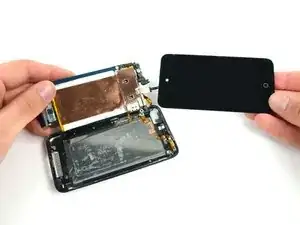
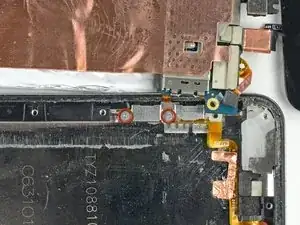

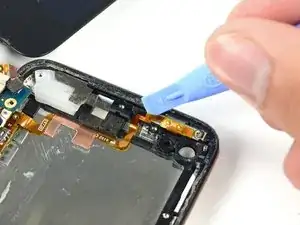
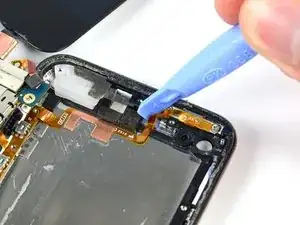
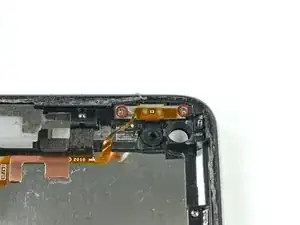
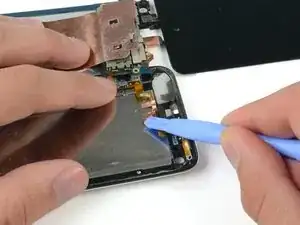
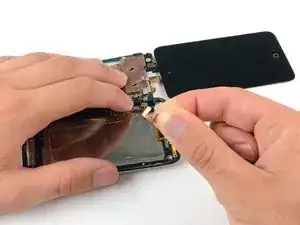
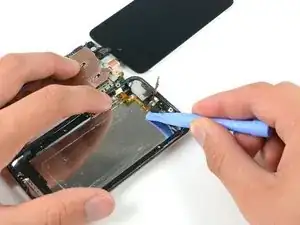
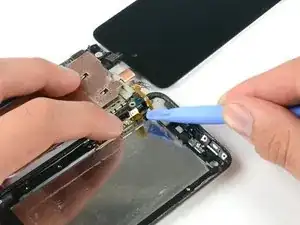
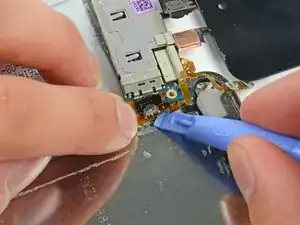
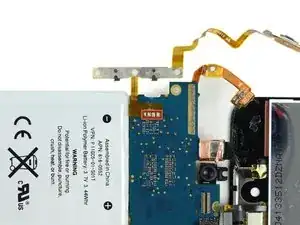
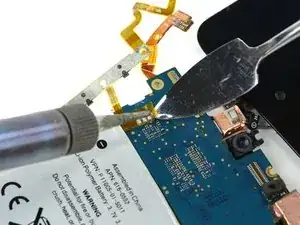
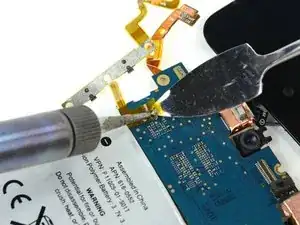

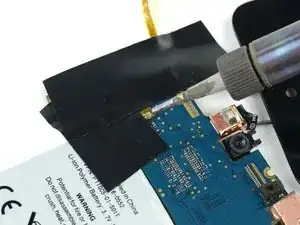
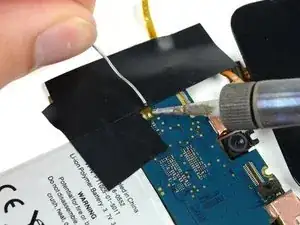
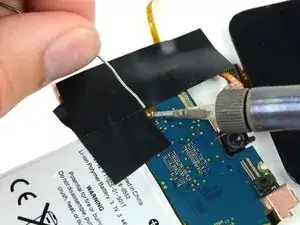
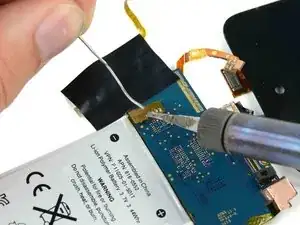

do I have to use a heat gun
Fabiola Winfield -
yes it is crucial
ben folks -
but u can use a hair dryer on warm
ben folks -
I didn't use a heat gun but this was due to the glass being rather shattered and not just cracked in the corner. The rule of thumb might be to not use excessive force, if you see that you need to use the heat gun or a blow dryer as someone suggested. I also wanted to point out the the adhesive strip just around the edges was exposed and it is rather strong so I was able to pull it around part of the edge which actually helped the glass disengage.
nirv -
Hi, thanks to this tutorial achieves replace my iPod battery to 100%, it was difficult, so thanks iFixit!
The only problem I had was with the iFixit screwdriver disappointed me greatly, as it can not remove the screws with the screwdriver.
A tip for those who first make repairs before starting the disarmament carefully read through the tutorial to not make a mistake that could damage your iPod and do not forget to place pieces in a safe place so they are not lost.
Greetings from Guatemala
Alfonso.
Alfonso Espinoza -
well then u suck
ben folks -
Be careful with the heat gun!! Don`t use it too much. You can melt something inside, specially when you`re closing the iPod.
Luiz R -
No man you can use a blow dryer!
Colton B -
Would a heat bead bag be safer option to weaken the adhesive?
Angus McLauchlan -
I had success with as low as 80°C using a hair dryer to melt the adhesive, I kept track of it with a meat thermometer. The battery says it's rated only up to 60°C...
micahvanderhill -
I got through all the parts to take the wifi antenna out!! But, I'm having a hard time putting the stuff back!!
~Palm head~ But thank you ifixit for the great and awesome directions, I understand clearly!! Thank you very much
Kaiden -
A hairdryer perfectly does the job. I’d recommend heating the bottom for 20 seconds, then attempt at inserting a plastic pick between the glass and the chassis. If it doesn’t work, reapply some heat in 10 seconds intervals until the glue gives in. You shouldn’t have to exert lots of force to release the adhesive, heat should do the job.
Then apply some heat to the top of the screen to release the remaining adhesive. Opening is straightforward. Just beware of the ultra little slack of the short yet fragile flexible digitizer cable.
Olivier Biot -
Thanks for the tip!
Lua Tech -